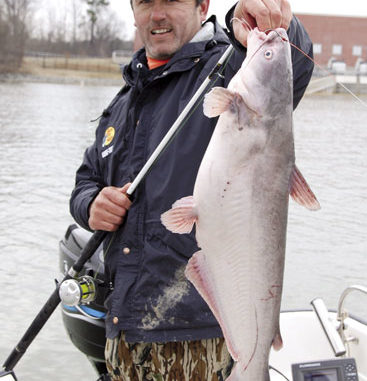
The trophy catfishing on this sleepy Catawba River lake has been a well-kept secret — until now.
Mountain Island Lake is nestled between Lake Norman to the north and Lake Wylie to the south on the Catawba River system.Locally known as a quiet waterfront community, Mountain Island covers only 2,788 acres but is prized for its high water quality; it provides drinking water to more than a half-million people in the Charlotte area. The lake also serves as a focal point for the close-knit community that surrounds it.
But lurking beneath the water’s surface is a well kept secret — the lake is home to a growing population of trophy-sized blue catfish.
“I fish all of the big lakes in the area, from Lake Norman above Charlotte down to Lake Wylie and Wateree over in South Carolina, and one thing stands out about Mountain Island,” said Chris Nichols of Gastonia, who guides part-time on the lake. “You won’t get the number of bites at Mountain Island that you’d expect on the other lakes, but when you do get a bite, you can bet it’s going to be a pretty good fish.”
In fact, up until a couple of months ago, Nichols’ best blue catfish ever was caught during a “fun fishing” trip that he and fellow guide Rodger Taylor took to Mountain Island.
“Rodger and I decided to go to Mountain Island during the early spring, looking for a big fish,” he said. “We were drifting a deep flat in about 20 to 25 feet of water right next to the main river channel — not far from the big island down at the dam. We typically use cut bait for drifting, but Rodger had some live gizzard shad in his bait tank, so we put a couple of live baits out and drifted them across the bottom.”
The bite came about 9:30 in the morning, and there was no doubt that when the rod went down that it was a big fish. Nichols was closest to the rod when it went down.
“The rod tip just buried down in the water which is pretty typical of a big blue cat, even if you are using something like a 5- or 6-inch live shad for bait,” he said. “I grabbed the rod and hung on, and the big cat made several hard runs looking for some type of cover. Eventually, I got its head up and brought it in to the boat, and we got the net on it. It was a long, healthy fish that weighed 42 pounds. After we weighed it, we took some photos and released it back into the lake.”
According to Taylor, a guide based in Rock Hill who fishes many of the same lakes that Nichols does, drifting for big blue cats is effective, but he admits he usually catches better fish when fishing from an anchored boat. Whether he fishes from an anchored position or drifts with the wind or current depends on the prevailing conditions.
“Typical conditions for March on Mountain Island are less wind early in the morning around daylight and more current coming downstream from the Cowan’s Ford Dam (below) Lake Norman,” said Taylor. “Anytime I have a situation with less wind and more current, I’m going to anchor up to fish because I can target specific spots.”
Taylor prefers to anchor on or near a drop-off that will grant him access to a number of different water depths — typically on the edge of a channel or near the intersection of a tributary creek to the main river channel. Mountain Island’s average depth is 17 feet, and that’s a good target depth, according to Taylor.
“I’ll anchor the boat from the front and hope there is enough current and wind to keep the back of the boat steady without having to anchor it,” said Taylor. “I normally use six rods across the back of the boat and not having an anchor on the back removes one possible way for a fish to wrap up and get off.”
With his boat in position over the edge of a drop that may go from 15 feet deep up on the flat to 20 or 25 feet down in the channel, he’ll fan-cast rods and position baits so he gets a shot at fish feeding on the flat, holding on the drop, or hanging out down in the channel.
“An ideal spot on Mountain Island is where McDowell Creek comes out to the Catawba River,” said Taylor. “The intersection forms a couple of delta-like humps before it empties into the river channel, plus you have flats on either side that are 15 feet deep, plus the channel itself, which is a little deeper.”
Taylor uses 7-foot Ugly Stik medium-action rods and Abu Garcia 6500 reels spooled with 20-pound solar-green mono. The medium action allows the fish to load up the rod, which helps in setting the 6/0 to 8/0 Gamakatsu circle hooks he uses. The green line allows him to see all the baits in his spread at a glance but doesn’t bother catfish, which are not line-shy. His catfish rig consists of a 3-foot section of 50- to 60-pound mono leader anchored by a 2- to 3-ounce no-roll sinker. On some occasions, Taylor will add a small float near the hook end to keep the bait up off the bottom. He also suggests snelling the big hooks to the heavy leader.
“Let the fish pull the rod tip all the way down in the water when you get a bite,” said Taylor. “That lets the circle hook rotate and (stick) into the corner of its mouth. Plus it’s a lot more fun to watch the rod bending over and pulling some drag than rush to set the hook and have it pull free.”
On days when there’s more wind than current or when he just wants to cover more ground to locate fish, Taylor will drift for catfish. Adequate wind allows him to position his boat upwind of an area he wants to cover, turn his boat sideways to the wind and use one or more drift socks to control his path. He can still drift when there’s not enough wind, but it’s more like trolling.
“Without wind, I’ll position the boat forward and cut back from six rods to four — two straight back and two out to each side,” said Taylor. “I’ll put out my trolling motor, and then I can go in whatever direction I like without having to go with the wind.”
Taylor uses the same tackle for drift fishing, although he maintains two separate sets of rods so he can move from one tactic to the other without retying rigs. The drift rig is entirely different, however, because he wants the drift rig to slide over cover, while the anchor rig is designed to say in position on the bottom. The amount of line out is also longer for the drift rig; Taylor prefers a minimum of 60 feet, to provide some scope for the rig to slide over the bottom without fouling.
“I track my trolling speed according to my GPS unit,” said Taylor. “I like to maintain about a half-mile per hour on the GPS speedometer. If the wind is pushing me faster than that, I’ll put out up to three drift socks. If it’s still too fast, I probably don’t need to be out on the water in that kind of wind.”
Unlike anchored fishing, Taylor prefers to drift over flats to locate catfish.
“I see drifting as a non-active tactic where you’re going to the fish,” he said. “While anchored fishing is done on channel edges and drops — places catfish normally feed — so they’re coming to you.”
“I like a muddy flat in March, something around 20 to 25 feet deep,” he said. “If they’re not actively feeding, it seems like they like to lay on the bottom in the mud and try to stay warm. When that bait comes rolling across their nose, it’s too easy for them to pass up.”

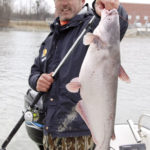
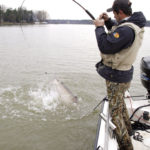
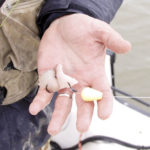
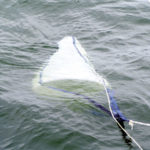
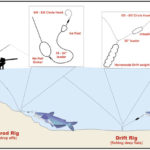
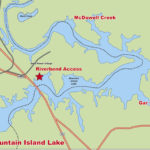



Be the first to comment